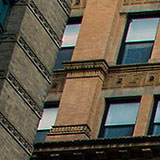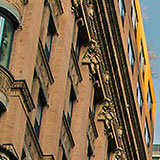Weekly Team Reports
Team: O-Vac
Date: 1/17/2017
Week: 1
Part 1: What were you assigned that week? What did you work on?
For the first week each individual team member wasn’t assigned a specific task, the team focused on getting in contact with Russ, getting room access, requesting the proper workstations, getting in contact with people about getting the hardware from the project and talking to a professor about micro-controllers. Aaron did work on doing researching on waterproofing and the effects of deep sea pressure on O-rings, Garrett Stoll built a basic website for the team, Garrett Ding created the github repository and Josh Gutterman co-ordinated with MBARI and Steve .
Part 2: Did you do it? How?
Garrett S. scheduled a time to meet with Professor Gabriel Elkaim to discuss the scope and goals of the project, as well as what the project currently looks like. The entire team met with Prof Elkaim on Friday, January 13,2017. He made several suggestions, advising us to do some redesigning of the mechanisms as well as a better enclosure for our electronics. Additionally, we were most interested in what he would say about micro-controllers, he advised us to use the PIC32, with the primary justification being the need for rapid prototyping which prioritizes our time and getting off the ground running. Elkaim also stressed the need to make the device dummy proof and to reduce the amount of moving parts that the researchers will have to move.
Part 3: Major Obstacles of the week.
The major obstacle of the week was MBARI postponing our visit to Feb 1st (pending) we had planned to ask many questions on waterproofing and how they managed the electrical and pneumatic connections for their robots underwater. Postponing this meeting set us back quite a bit but we will have to ask Steve to get us in contact with someone knowledgeable on at least waterproofing at >100ft depths.
Part 4: Tasks to do next week.
We should have the enclosure this week and should be testing the power needs of the solenoids, so we should have a rough power budget. We should also look at what does need to be redesigned, why it needs to be redesigned and have various sketches. We should also look at various funding methods and compile a generic application that we can just modify to cater to different grants.
Team: O-Vac
Date: 1/24/2017
Week: 2
Part 1: What were you assigned that week? What did you work on?
This week our goal was to get the solenoids working and to make sure they can be interfaced with the microcontroller. We wanted to make sure that we could interface with the Uno32 and that we could work with the bootloader of our choice(ds30loader). Additionally we wanted to be able to illustrate our structural design ideas by sketching and modeling in Solidworks. We also wanted to solidify our parts list and begin to order what will be most immediately necessary. Finally we planned on coordinating funding through multiple sources and finalizing details with these contacts.
Part 2: Did you do it? How?
Garrett S. downloaded bootloader firmware onto our Uno32 that allows us to program it in C. Once the firmware was updated he configured our chosen IDE (MPLABX) to the specifications of the Uno32.
Aaron and Garrett S. built a breadboard prototype of a transistor circuit to sink current from the power supply and activate the solenoids when the microcontroller outputs 3.3V from its I/O pins. They also wrote a small C program using MPLABX that controls multiple I/O pins which are connected to our solenoid driver.We tested and documented the solenoids behavior(current draw, air leaks, etc.) when activated while connected to the scuba tank.
We sketched out some of the physical design changes we intend to make on the structure and illustrated some of the functional characteristics of the intake valve. Garrett S. reverse engineered the existing structure and created a 3D solidworks model of each individual component. He then created a virtual assembly in solidworks of the entire structure so that we can model any design changes and see how it affects the system as a whole.
Josh has been in contact with Steve, our contact at the Long Marine Lab, and arranged for us to pick up all the equipment, including the scuba tank and first stage. We met with him again on tuesday 1/23 on campus and discussed his desired functionality as well as the data he would like to be collected. He also gave us some insight on how his lab deals with waterproofing, along with some strategies we can use moving forward.
Through Steve we have made contact with a possible source of funding. Roger Lenington is a researcher at the University of British Columbia and has expressed interest in funding this project. Josh has been preparing a budget and parts list to present to him. We are also looking into UCSC’s crowd funding program.
Part 3: Major Obstacles of the week.
Preparing the microcontroller was the largest obstacle this week. We had to solder on a six pin input port and then use a pickit3 programmer to flash the Uno32 and update the bootloader. The pickit we had to borrow from BELS and tracking down the correct software took some time and prevented us from working with the solenoids until this was accomplished.
Uno32 I/O libraries in C were difficult to find.
Part 4: Tasks to do next week.
Solenoid timing and preliminary state machine.
Solenoid limits(6Hz?)
Field testing in pool.
Order Sensors.
Calibrate pressure sensor.
Apply Teflon tape to solenoid fittings.
Build internal structure within water proof housing.
Decide on lift bag method.








